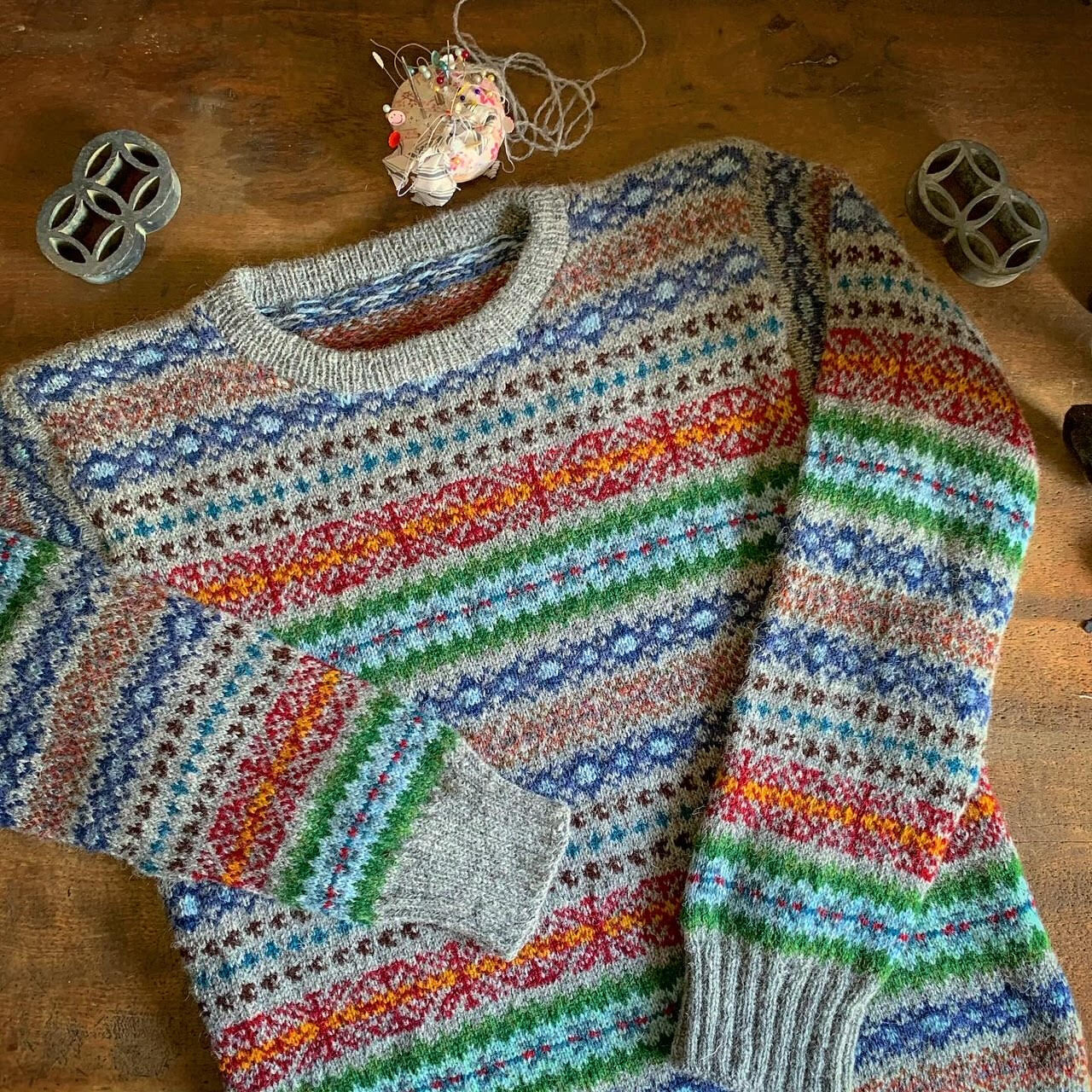Newtown House: Can you tell us how you got started in yarn and fibre?
John Arbon: Ohhhh, well, it originally started way back in the early 80’s when I studied print at the LCP (London College of Printing) and learnt about silk-screen printing on textiles. Later in life I set up a T-shirt printing company called Shirt State, printing band and festival T-shirts, etc. Got to the point where I wanted to know more about the textile I was printing rather than the actual printing. So I enrolled at DMU, or Leicester Poly as it was, and studied a degree in Textiles & Apparel and specialised in spinning and knitting. I then went on to start a Masters at Nottingham Trent University but only got as far as PGDip in Textiles & Fashion. I then went on to work in the knit industry in Leicester before quitting it all and followed a pipe dream of starting a textile business in the South West utilising alpaca fibre.
John at work
NH: We know that you, John, have been responsible for restoring the Mill's machinery, with much of it salvaged from other mills that had closed down. How many pieces of equipment have you restored to their full glory? Are there any more waiting in the wings? Do you have a favourite?
JA: Well, we have worked on about 8 -10 machines over the years to get them running — wouldn’t say full glory, more like running fine and looking a bit tatty! One day we will give them all a lick of paint and they will return to their full glory! Favourite-wise I love Butler, the sample ring spinner — it’s a thing of beauty and totally bulletproof. This machine will spin for another 50 years at least — built in 1968, which makes me older than Butler! Last machine I revamped was Piglet, our mini-skein winder. Quite proud of the way that one turned out, so it is time for me to revamp Gillian, our 120-year-old skein winder.
NH: Tell us why it's been so important for you to ensure skills and equipment are maintained, and even revived?
JA: The industry is becoming more and more generic with large machinery spinning large volumes of craft yarn, and consequently we tend to see the same old yarns and blends doing the circuit, albeit in different and interesting dye combinations. With our old small-volume machinery and gentle, slower production we are able to offer diversity, quality and a real love and understanding of what we produce. It is vital we pass these skills on, and the knowledge of fibre and its behaviour, so that for future generations we can continue to produce bespoke quality craft yarns.
NH: What's it like walking into the Mill each day and firing up the machines you've carefully restored?
JA: Once you’ve done it a thousand times it becomes automatic, although there is always a bit of anxiety if a new noise suddenly occurs — a slight knocking or buzzing — but to hear those machines hum in harmony and whirl out the fantastic yarn is always special. The weirdest bit is when everything is switched off, and then there is this deafening silence!
NH: What's been the hardest thing about this, and what has been the greatest reward?
JA: Hardest thing …..too many over the years, but big ones have been putting machines together from a pile of components when you have never see the machine built — somewhat daunting. Breaking machines down and literally humping solid steel and cast down flights of stairs in old mills. Being told not to bother, and you’re wasting your time to have nothing but a few quid in the back and a dream that one day it will all work. Not much change there, then!
NH: What's the highlight of the last 20 years - if you can name one?
JA: Getting this far without a breakdown and retaining all my fingers! Seriously, seeing like-minded people in the Mill team get involved and sharing mine and Juliet’s vision and passion but also seeing them take it to new levels beyond what we could do. Things are always growing and evolving, and we couldn’t do that without our team.
NH: What's ahead for the next 20 years?
JA: More please! More fantastic yarns, new blends, new breeds, exciting new colour combos, more patterns, new techniques creating new interesting and diverse yarns…..watch out, here we come!
Inspirations from vintage vinyl for Yarnadelic
NH: Anything else you’d like to add?
JA: I would just say this: There is nothing special about what me and Juliet have done. All it takes is the desire and will to do something you are passionate about and tried your damndest to do it well with style. To that end it would be great to see other such mills in the UK doing similar to what we have done rather than importing yarn into the UK. Let’s face it, we have a lot of sheep and a lot of yarn crafters here, plus we should be exporting unique yarns, not importing!
Photos courtesy John Arbon Textiles











